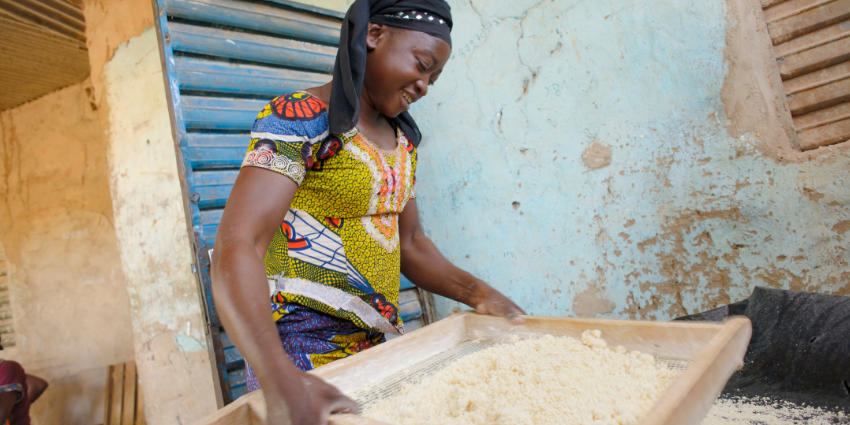
In 2013, the Grameen Crédit Agricole Foundation created the “African Facility” technical assistance programme funded by the Agence française de développement (AFD).
This programme launched 9 years ago and ending in December 2021 enabled to carry out 326 technical assistance missions in favor of 26 partners of the Foundation for a total amount of 3,52 mln euros in grants.
Feedback on the programme with the testimony of Gaston Assagwe, ACFIME’s Executive Director.
ACFIME (Agence Communautaire pour le Financement de la Micro Entreprise) is a Tier 3 microfinance institution (loan portfolio < 10 million USD) in Burkina Faso. At the end of December 2020, the institution served 21,504 clients with outstanding loans of € 1.9 million. It offers credit and savings products mostly to women (90%) living in rural areas (90%).
Within the technical assistance programme of the African Facility, the consultant Pierre Houssou supported the institution in the development of a risk map adapted to its challenges and its development strategy.
Why was developing a risk map important for ACFIME?
ACFIME was created in 2007 and developed its activities on a national level with three branches and seven service points. Since the creation, it implemented an internal audit service to ensure control of the institution’s operations and anticipate risks. Within the African Facility programme, the institution was supported by Pierre Houssou in the development of a risk map. Today, the periodic monitoring of the mapping makes it possible to monitor the evolution of the risk and to quickly take measures to fix it.
What did you expect from the consultant? Did the results meet your expectations ?
How to detect a risk, how to analyze it, how to measure its importance in a sustainable and viable way for the institution? Thanks to this mission, the internal audit department was first trained on the concept of risks and the development of a plan to mitigate them. As risks can be found in each position and each procedure or process, everyone’s collaboration was essential to achieve the second objective of the mission: the development of a risk map. The participatory approach used by Pierre Houssou (individual questions and answers, focus group, votes, plenary sessions, etc.) enabled each member of ACFIME to be an actor in this great work of reflection and analysis.
What is your review of this mission and how could it have been improved?
The mission could have been extended but the result is very positive. At the end of the mission a risk management committee was set up within ACFIME to update the map independently. We now have a precise mapping adapted to financial, operational and strategic risks, as well as efficient management tools. The annual internal audit plan is also based on this mapping to develop ACFIME.
How has this mapping helped you better manage risk during the Covid-19 crisis?
Since the implementation of this mapping, the risks identified have been subject to a mitigation plan which enabled to prevent and reduce existing risks. In the context of the Covid-19 crisis, the mapping helped ACFIME to turn to local financial partners, such as the State of Burkina Faso, to cope with the drying up of international funding due to travel restrictions and global health restrictions.